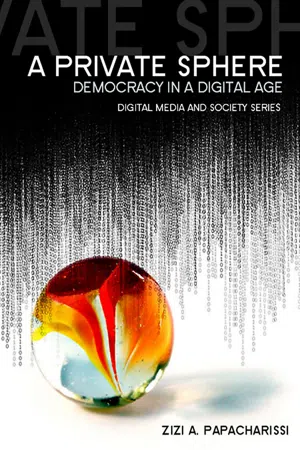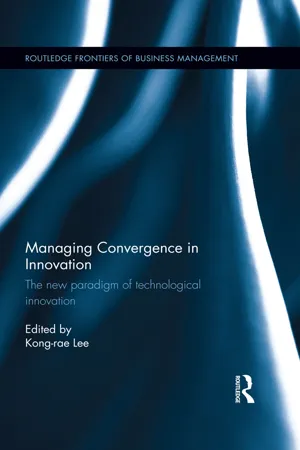Convergence Engineering
Convergence engineering involves the integration of various disciplines, such as electronics, telecommunications, and computer science, to develop innovative solutions. It focuses on merging different technologies to create new products and systems that can address complex challenges. This approach emphasizes collaboration and interdisciplinary thinking to drive advancements in the field of engineering.
4 Key excerpts on "Convergence Engineering"
- eBook - ePub
AI in Healthcare
How Artificial Intelligence Is Changing IT Operations and Infrastructure Services
- Robert Shimonski(Author)
- 2020(Publication Date)
- Wiley(Publisher)
...Technology is at the forefront of this simple equation and ensures the infrastructure needed to create opportunities for delivering care in a connected world. We rely on technology for everything we do, so healthcare acting as a microcosm of our world is no different. In fact, the technology provided needs to not only be the best we can offer but also be dynamic enough to change rapidly with the needs of the clinician's work on a daily basis. As health innovation takes place, technology must be in line with (and sometimes ahead of) it to be useful. You could say that one cannot operate without the other these days, and therefore the need for convergence is critical to success. Integration of systems allows all parties to share technology to increase best-case outcomes for everyone involved. Convergence brings technology and the needs of the clinician together to be used in a way where one technology helps to build upon the other. Once integration and convergence occur, AI can be used to help create opportunities where none existed before. Think of integration as the connection between disparate systems, and think of convergence as the synergy that takes place when these systems can be used together via configuration or shared services. As these systems connect, they provide more value. We will even learn that what we try to do technically in the healthcare settings is an advanced version of what each of us may be trying to do in our own homes with smart home technology. Even more interesting is that our homes may become the new patient rooms extending the healthcare system even further over the Internet to connect everyone anywhere to access quality health services. This can give clinical staff the immediate response to those in need even if they haven't left their homes when in need...
- eBook - ePub
A Private Sphere
Democracy in a Digital Age
- Zizi A. Papacharissi(Author)
- 2013(Publication Date)
- Polity(Publisher)
...Technologies that were previously separated are now produced and made available synergistically, ranging from chips that embed a variety of data, to communication networks that transmit multi-mediated content, to machines that serve a variety of overlapping functions, to content that is deliverable as easily through television as it is via mobile technology. Technological convergence is an ever-evolving process, enabled by information technologies that develop knowledge by acting on the basis of previously existing and presently produced knowledge. Yet, isolating convergence to the technological realm underplays the historical circumstances that have shaped and are shaped by the process of convergence. As a cultural process, convergence implies a dialogue between flexible, evolving, and interconnected modes of media production and individuals who seamlessly flow through media platforms with little conscious regard for conventional producer/consumer binaries. From this viewpoint, Jenkins (2006a) defines convergence broadly as: A word that describes technological, industrial, cultural and social changes in the ways media circulate within our culture. Some common ideas referenced by the term include the flow of content across multiple media platforms, the cooperation between multiple media industries, the search for new structures of media financing that fall at the interstices between old and new media, and the migratory behavior of media audiences who would go almost anywhere in search of the kind of entertainment experiences they want. Perhaps most broadly, media convergence refers to a situation in which multiple media systems coexist and where media content flows fluidly across them. Convergence is understood here as an ongoing process or series of intersections between different media systems not a fixed relationship. (p. 282) It becomes evident that convergence expresses the fluidity, interconnectedness, and information-centrism of post-industrial societies...
- eBook - ePub
Smart Cities and Artificial Intelligence
Convergent Systems for Planning, Design, and Operations
- Christopher Grant Kirwan, Fu Zhiyong(Authors)
- 2020(Publication Date)
- Elsevier(Publisher)
...Starting with the physical dimension, rooted in nature, theories of evolutionary convergence show distant species evolving in convergent ways, and co-discoveries being made, such as that of evolution itself. This leads into scientific convergence and the city infrastructure dimension. Through the base layers in nature, technology connects up through to the human dimension and cultural level, where knowledge is also converging in the social and technological discourses. In the pure technology dimension, nanotech and biotech are reinserting themselves into the nature layer, as well as integrating and being embedded in one another, such that it forms a continuum. At our phenomenological and experiential level, nature, human, and technology have all converged. What is clear is that smart cities and AI are inexorably on a convergent path, and we must form smart coalitions toward civil collective intelligence to operate it and nurture the environment. Design must adhere to the core values to serve the user and citizen as participants of the living city. This is fostered and maintained by principles of co-design, co-development, citizen participation and UX feedback loops. Living labs and innovation hubs provide opportunities and spaces to prototype such projects. It is upheld at a policy level by public–private–people partnerships and global civil society organizations. Transdisciplinary approaches are needed more than ever to expand our scope of inclusion to all life forms and the rights of animals and nature as stakeholders. The 4th Industrial revolution, the technological singularity, and perhaps a metamodern turn in globalization, are all convergent attractors in the 21st century and beyond. These attractors can be grounded in smart cities, which are expected to grow in population over the century as migration from rural areas to cities continues...
- eBook - ePub
Managing Convergence in Innovation
The new paradigm of technological innovation
- Kong-rae Lee, Kong-rae Lee(Authors)
- 2016(Publication Date)
- Routledge(Publisher)
...Machines confronted a similar collection of technological problems dealing with such matters as power transmission, control devices, feed mechanisms, friction reduction, and a broad array of problems connected with the properties of metals. These problems became common to the production of a wide range of commodities. These were apparently unrelated from the point of view of the nature of the final product. The uses, however, of the final product were very closely related on a technological basis. Rosenberg called this phenomenon ‘technological convergence’ and argued that the intensive degree of specialization which developed in the second half of the nineteenth century owed its existence to a combination of this technological convergence. Since the concept of ‘technological convergence’ appeared at the end of the nineteenth century, similar terminologies have been developed by relatively few innovation scholars such as Kodama (1986, 1991, 1994) and Kong-rae Lee and Jung-tae Hwang (2005), and Kong-rae Lee (2007, 2015). They argued that convergence innovation is a fundamental phenomenon prevailing in the modern industries and that it is associated with strong leadership in a particular technology, and can be possible through concerted efforts by several technological experts. Convergence innovation has contributed not only to the rapid growth of companies but also to the gradual growth of all the companies in many industries (Lee and Hwang, 2005). This paper aims to measure the degree of convergence innovation and their trends at the industry level. The data set used is composed of twelve years of data in longitude from five industry types with thirty-nine sub-industry sectors and comparisons of four countries having patent applications in the United States: Japan, Korea, Taiwan, and China...



